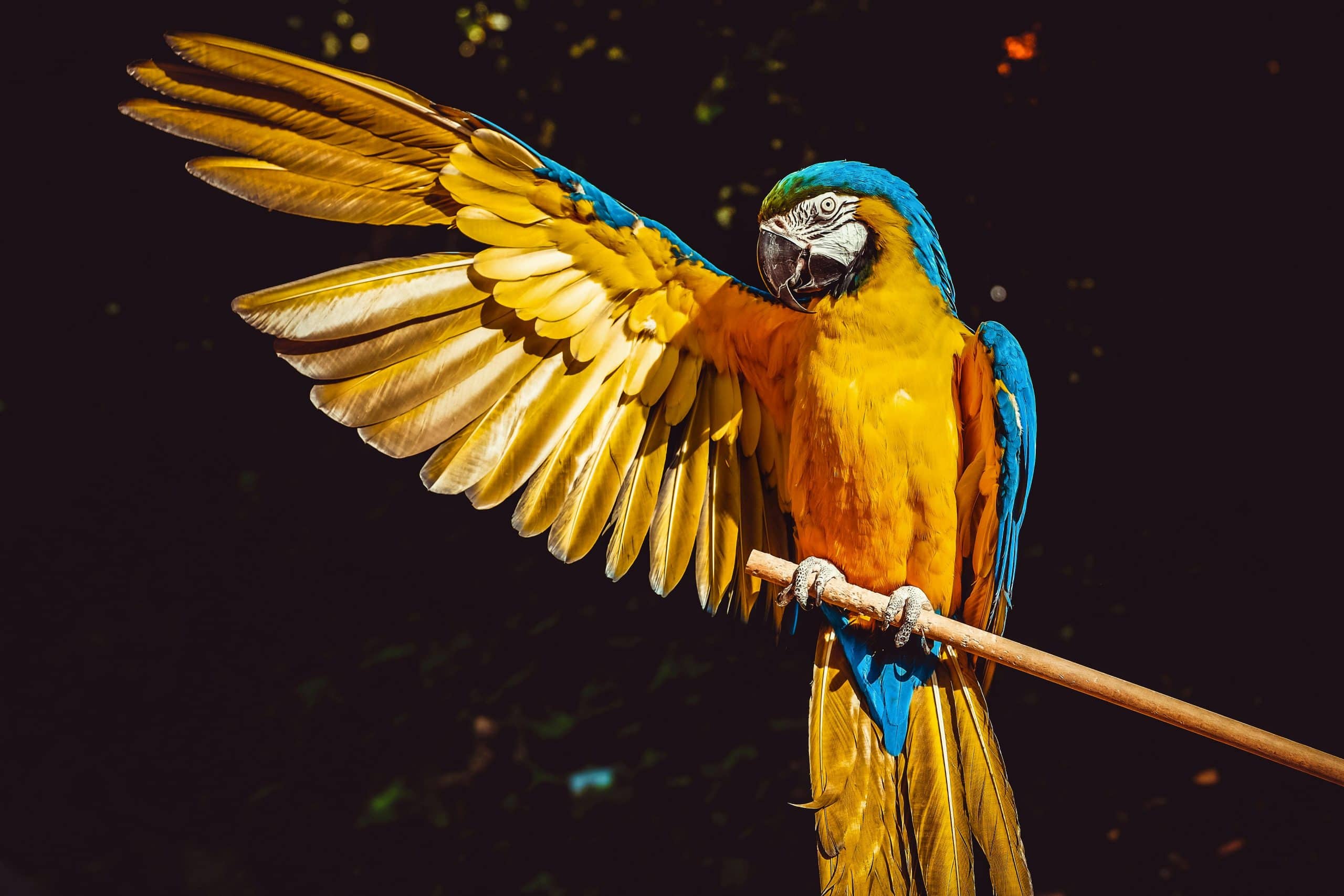Considered by many as special companions, parrots are not just pets, they are family. Traveling with your feathered friend can seem like a daunting task. This guide will provide all the pertinent information that will allow you to undertake this journey in the best possible manner.
Preparing Your Parrot for the Journey
To make the journey smooth and stress-free, it’s crucial to prepare your parrot well in advance. The three key areas of preparation include getting your pet accustomed to the travel cage, preparing the right kind of travel cage, and ensuring the bird is healthy.
Avez-vous vu cela : How to Create a Puppy Feeding Schedule to Prevent Obesity?
Getting Your Parrot Accustomed to the Travel Cage
A travel cage will be your bird’s temporary home during the journey. Thus, it is essential that your bird feels comfortable and safe in it. Start by introducing the travel cage to the bird. Place it near the bird’s regular cage and let it explore this new space. Encourage your pet to enter and exit the cage on its own. Use positive reinforcement techniques, such as treats, to make the process more enjoyable for your pet.
Avez-vous vu cela : What Are the Best Non-Toxic Substrates for a Leopard Gecko’s Enclosure?
Preparing the Right Kind of Travel Cage
Not all cages are suitable for air travel. The travel cage should be spacious enough for your bird to move freely, but compact enough to fit under the seat in front of you in the cabin. The cage should be well-ventilated and secure, with a sturdy door that can be locked. Always check the airline’s specific cage requirements before purchasing a travel cage.
Health Check-ups
Before embarking on the journey, make sure to have your parrot checked by a vet. Travel can be stressful for birds, and any underlying health issue can get aggravated due to this stress. The vet will also guide you regarding the travel diet that will best suit your parrot.
Understanding Airline Policies
Air travel regulations for pets can be quite complex and may vary from airline to airline. It’s important to familiarize yourself with the airline’s pet policies in order to avoid any last-minute surprises.
In-Cabin or Cargo Hold
While some airlines allow pets in the cabin, others may only permit them in the cargo hold. Your preference should always be to keep your bird with you in the cabin. However, if that’s not an option, you may have to prepare your parrot for travel in the cargo hold.
Size and Weight Limitations
Airlines usually have specific size and weight limitations for pet carriers. If your carrier exceeds these limits, your bird may not be allowed to travel with you. Hence, always make sure to check these limitations beforehand.
Documentation Requirements
Airlines may require certain documentation for your bird’s travel. This may include health certificates, vaccination records, or even specific permits. It’s crucial to research and apply for these documents well in advance.
Navigating through Airports and Flights
Navigating through the busy and often chaotic spaces of airports and flights can be challenging, even more so when you are with your pet. Here’s how you can make this process easier.
Arrive Early
Arriving early at the airport will give you plenty of time to get through the check-in and security processes. Having extra time will also allow you to calm your bird and get it accustomed to this new environment.
Feeding and Hydrating Your Bird
Feed your bird a light meal about two hours before the flight. Once onboard, make sure to hydrate your bird periodically. You can do this by offering fresh fruits or vegetables, or by providing water in a small dish.
Keeping Your Bird Calm
During the flight, talk to your bird in a soothing voice to keep it calm. Covering the cage with a light cloth can also help in reducing stress.
Traveling Internationally with Your Bird
If you’re planning to travel internationally with your bird, there are additional regulations that you need to be aware of and comply with.
Understanding Country-Specific Rules
Each country has its own rules and regulations for importing birds. Some countries might require quarantine upon arrival, while others might not allow certain species of birds. Hence, it’s important to thoroughly research the country’s rules before planning your travel.
Getting the Necessary Permits
International travel with birds usually requires additional permits, which may take time to procure. Make sure to apply for these well in advance.
In conclusion, while traveling with your pet bird might seem overwhelming, with careful planning and preparation, it can turn into an enjoyable experience for both you and your feathered friend. Happy traveling!
Taking Care of Your Bird During the Flight
Taking care of your pet bird during the flight is of utmost importance. No one knows your bird better than you do, and you’ll need to ensure that you are meeting all your bird’s needs while onboard.
Ensuring Comfort
First and foremost, comfort is key. The cage should be lined with a soft material to make it comfortable for your bird. The temperature in the cabin can often vary, so make sure you carry a light blanket to cover the cage if needed.
Managing Noise and Distraction
Airplanes can be noisy, and the noise can be distressing for pet birds. Using a light cloth to cover the cage can help in reducing the noise. Additionally, talking to your bird in a soothing voice can be very calming.
Feeding and Hydration During the Flight
Your bird will need to be fed and hydrated during the flight. Provide fresh fruits and vegetables, and refill the water dish as needed. Remember, it’s better to underfeed than overfeed your bird during the flight to avoid any digestive issues.
Monitoring Your Bird
Lastly, keep a close eye on your bird throughout the journey. If you notice any signs of distress, such as excessive fluffing of feathers, lethargy or loss of appetite, inform the flight attendant immediately.
Post-Flight Care for Your Bird
After the journey, your pet bird may need some time to recover and adapt to the new environment.
Allowing Rest
Allow your bird to rest and recover from the travel fatigue. Birds can often get stressed from travel, and rest is crucial for their recovery.
Observing Your Bird
Keep a close eye on your bird for the first few days after travel. Monitor its eating habits, energy levels, and overall behavior. If you notice anything unusual, it’s best to consult a vet.
Gradually Adjusting to the New Environment
When bringing your bird to a new environment, it’s crucial to make this transition gradual. Start by keeping your bird in a quiet, comfortable space, and slowly introduce it to the new surroundings.
In-Cabin or Cargo Hold
While some airlines allow pets in the cabin, others may only permit them in the cargo hold. Your preference should always be to keep your bird with you in the cabin. However, if that’s not an option, you may have to prepare your parrot for travel in the cargo hold.
Final Thoughts
Traveling with your pet bird can indeed be a challenging task. However, with the right preparation and understanding of the necessary regulations, you can ensure a safe and comfortable journey for your feathered friend. Always remember, your bird’s comfort and safety should be your topmost priority.
Whether you’re travelling domestically within the United States or internationally, taking the time to thoroughly research and prepare will make the journey smoother for you and your bird. After all, pet friendly travel is all about making the experience enjoyable for both you and your pet. Happy flying with your pet bird!











